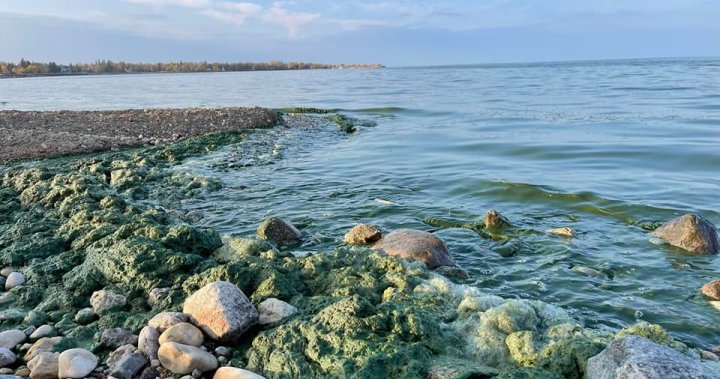
Team effort needed to tackle Manitoba lake pollution, experts say
Global News
'Phosphorus is a really valuable nutrient. And also it can be a contaminant or deteriorate water quality if it is transported in excess to surface waters.'
Tackling increased algae blooms in Lake Winnipeg due to phosphorous runoff needs to be a co-ordinated effort, advocates say.
More and more blue-green sludge has washed up on the banks of Lake Winnipeg in recent years, threatening the health of both the lake’s aquatic species population and the water supply.
Lake Winnipeg’s watershed spans one million square kilometres with various sources polluting it, including contaminants from the Red River, the Saskatchewan River, the Dauphin River, municipal wastewater treatment plants, urban lawns and gardens, and agricultural runoff.
Inoka Amarakoon, assistant professor in the department of soil science at the University of Manitoba, said better nutrient management is the only way to control and prevent increased blooms.
“Phosphorus is a really valuable nutrient. And also it can be a contaminant or deteriorate water quality if it is transported in excess to surface waters,” she said.
Limiting and regulating activity that generates a surplus of the nutrient in waterways, like agriculture runoff and human and animal waste, can go far in preventing elevated phosphorous levels, Amarakoon added.
Within Winnipeg, the sewage treatment plant in the city’s North End has been struggling to comply with limits on phosphorous production, which is pegged at one milligram per litre.
Earlier this month the City of Winnipeg’s water and waste department said there are months in which the treatment plant is in compliance with allocated phosphorous levels. In other months the plant is not.
